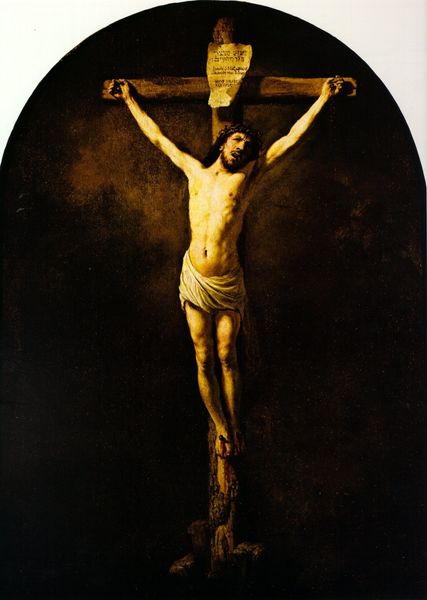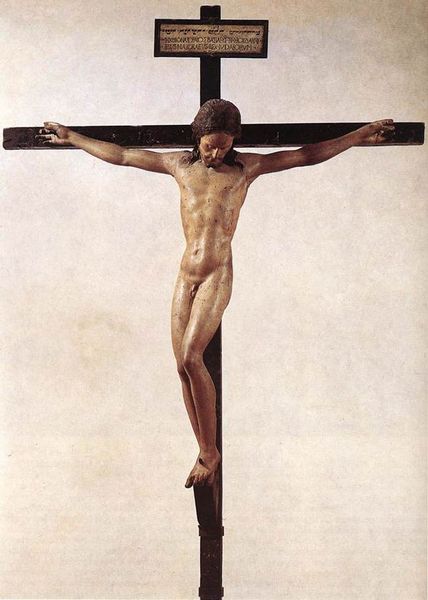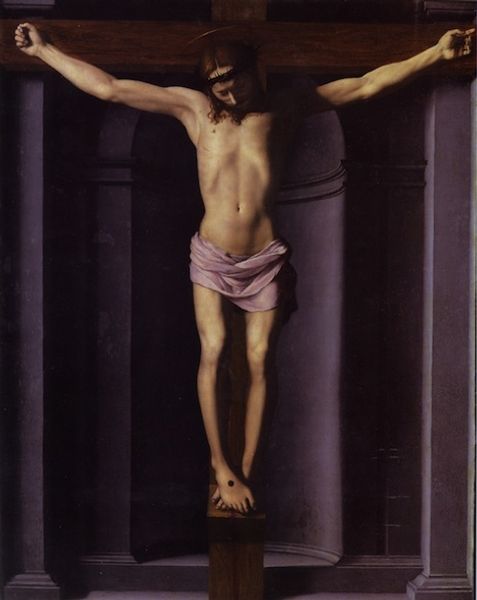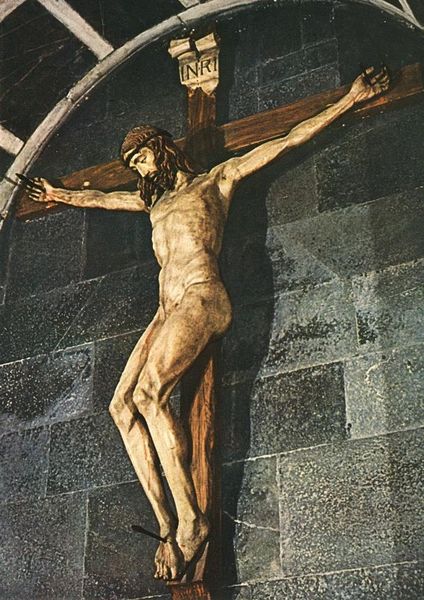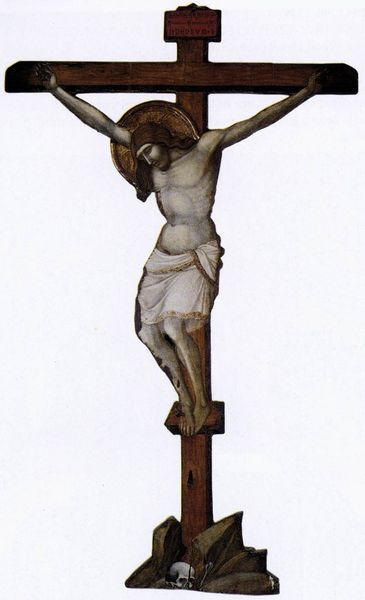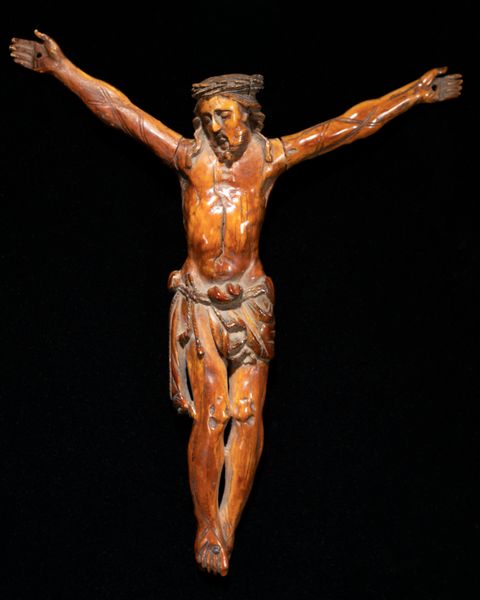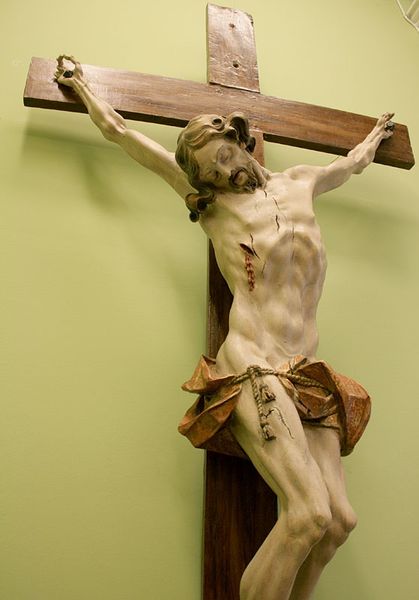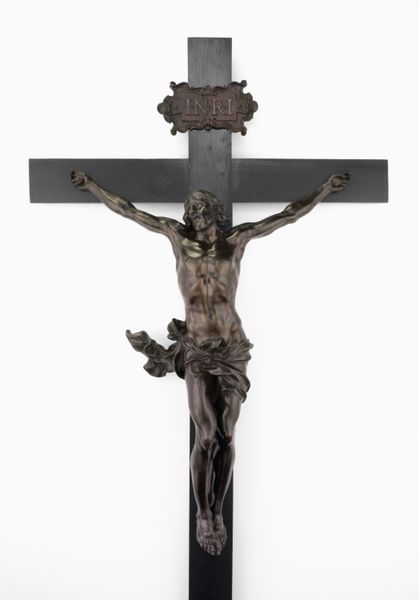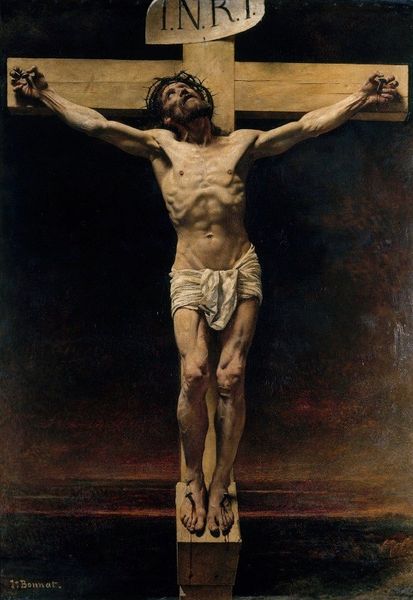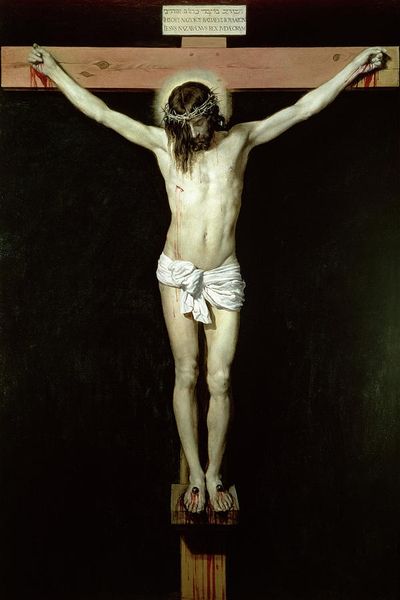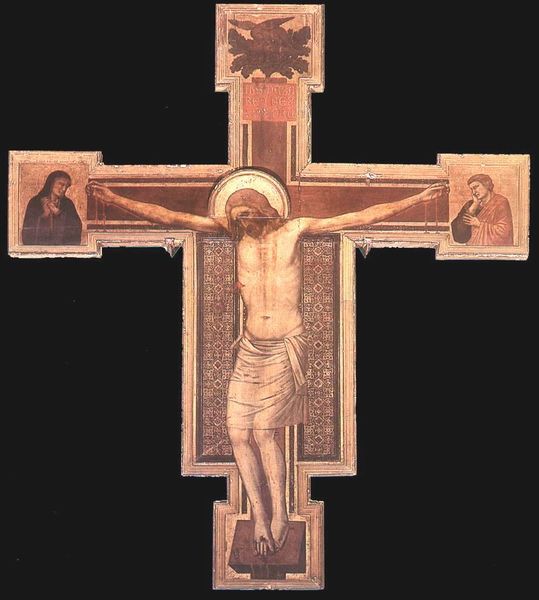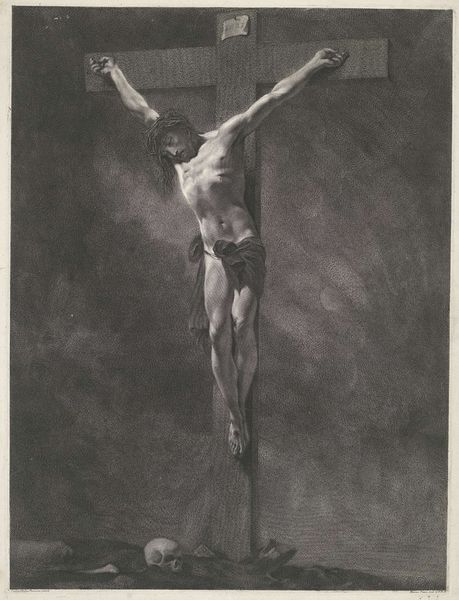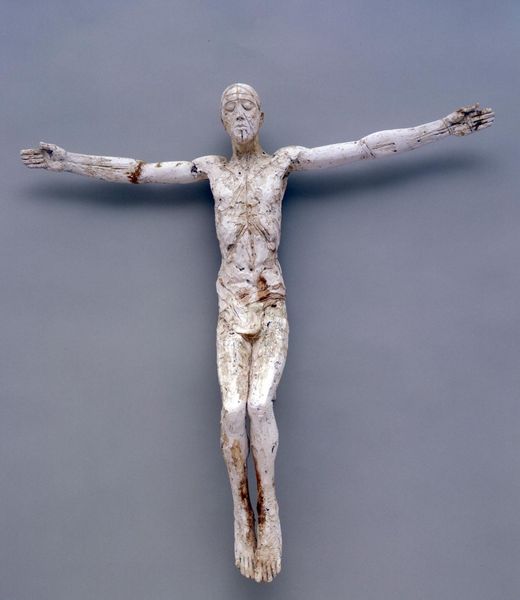
sculpture, wood
#
baroque
#
figuration
#
oil painting
#
jesus-christ
#
cross
#
sculpture
#
wood
#
crucifixion
#
history-painting
#
nude
#
christ
Copyright: Public domain
Curator: The emotional impact is undeniable, isn't it? Editor: It is. There's an intense sense of agony rendered in this sculpture. The piece before us, entitled "Crucifixion," was crafted in 1758 by Johann Georg Pinzel. Predominantly made of wood. What strikes you about it formally? Curator: It's the pronounced musculature. See how the wood is carved, how deeply the artist cuts in order to achieve the texture of skin stretched so thin? The Baroque was very fond of heightened emotion. I'm intrigued by what kind of tools the artist was using and who assisted him. We know very little about Pinzel’s workshop—its economic drivers. Editor: For me, this rendition of Christ on the cross evokes more than just physical suffering. Note how his gaze seems directed heavenward; his suffering carries a deeply symbolic and almost ecstatic spiritual intensity. Curator: I'm more taken by the artist's process; Pinzel clearly favors a dramatic manipulation of material—the exaggerated pose of the figure, for instance—what are the means for its fabrication? The choice of wood allows for an interesting engagement between Baroque aesthetics and available materials. Was this the most financially sound material, or an artistic choice? Editor: Consider, though, the enduring power of the crucifixion as a symbol. It represents sacrifice, redemption, and ultimately, hope. Its potency transcends mere materials or technique. Do you think Pinzel recognized its iconic staying power? Curator: I understand your interest in the image's meaning over time, but I return to questions about how artwork is actually produced in order to understand society in this moment in time. It begs questions of labor—how sculptors such as Pinzel balanced art, belief, and pure commerce. Editor: Indeed. It is fascinating how "Crucifixion" still holds the power to move us deeply. Pinzel's grasp on both iconography and form renders an emotionally charged artwork that will resonate for generations to come. Curator: Yes, it allows me to ponder not just religious belief but workshop dynamics and the economic realities surrounding sacred art production. Food for thought.
Comments
No comments
Be the first to comment and join the conversation on the ultimate creative platform.
